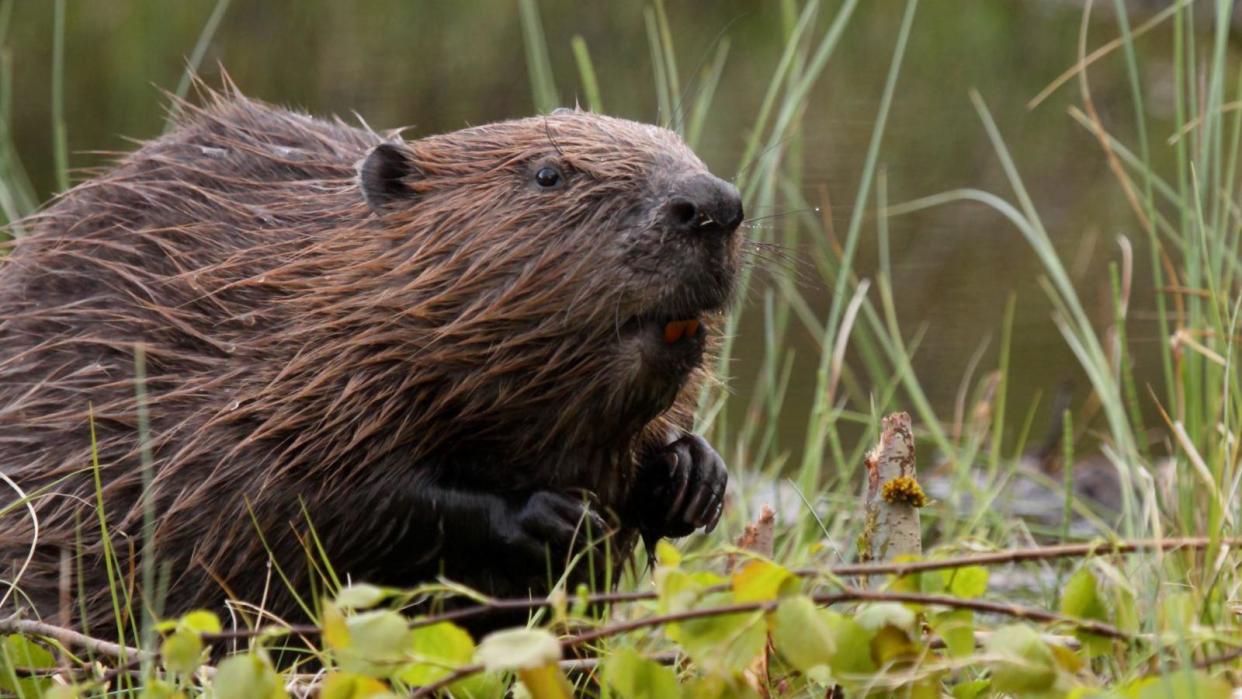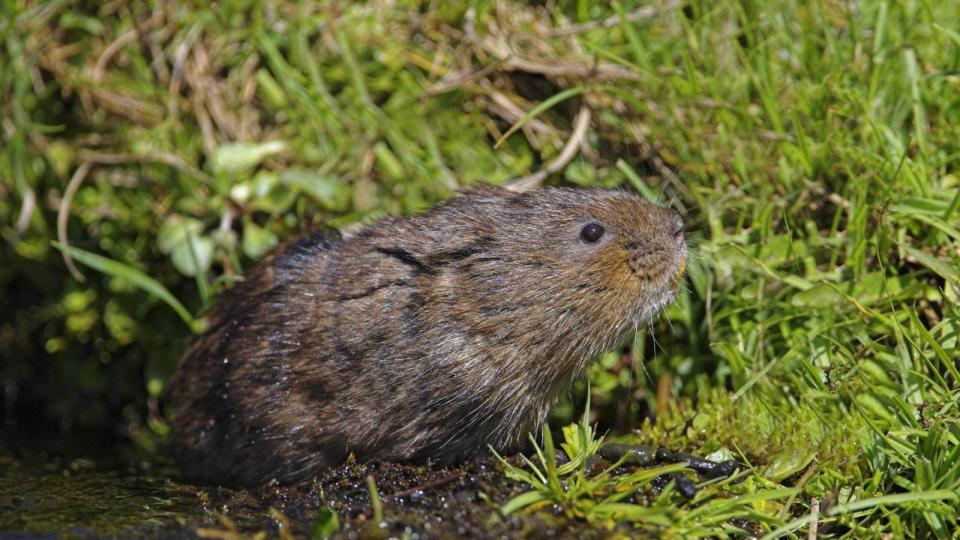Beavers build 'ideal' habitat for endangered native voles

Beavers introduced to a Scottish rainforest in 2009 may have created the "right conditions" for native water voles to flourish, according to conservationists.
Dams built by beavers in Knapdale, Argyll and Bute, have led to the creation of a new habitat where water voles can dig burrows hidden from predators.
Once abundant in Scotland, water voles are now one of the country's most threatened native animals.
Forestry and Land Scotland (FLS) said beavers had blurred the line between water and land, providing the ideal conditions for water voles to flourish.
John Taylor, west region area wildlife manager for FLS, which manages the Knapdale forests, said: "Aside from flooding a few places, the biggest impact we've seen from the beavers is creating a new habitat along watercourses.
"One of water voles' main predators is mink. If you have a very simple burn or loch, it's easy for mink to find the water voles' burrows - and the female mink is small enough to get right inside.
"They've increased what we call edge habitat: instead of a harsh change from water to land, the edges along the burns and lochs are softened and seasonally flooded."

Beavers were hunted to extinction in the 16th Century and were reintroduced to Knapdale in 2009 during the Scottish Beaver trial.
Pete Creech, wildlife ranger at the Heart of Argyll Wildlife Organisation, which is working with FLS in the initial stage of the reintroduction of water voles, said beavers were better engineers than humans when it came to creating wetlands.
He said: "We have a huge advantage in Knapdale that will assist the return of water voles; the engineers of their habitat have been busily creating the right conditions for the past 15 years.
"The human creation of wetlands is an extremely costly undertaking and, frankly, we're not as good at it as beavers.
He added that water voles were themselves "eco-engineers" who could in turn create conditions for wildflowers to flourish.
"Water voles and beavers are complementary species and, in their own way, the voles are as busy eco-engineers as their bigger cousins.
"Our restoration of the rainforest since the mid-1990s created some of the best beaver habitats in the UK.
"It's apt that the beavers themselves have carried on the work to pave the way for the reintroduction of another species like the water vole."


